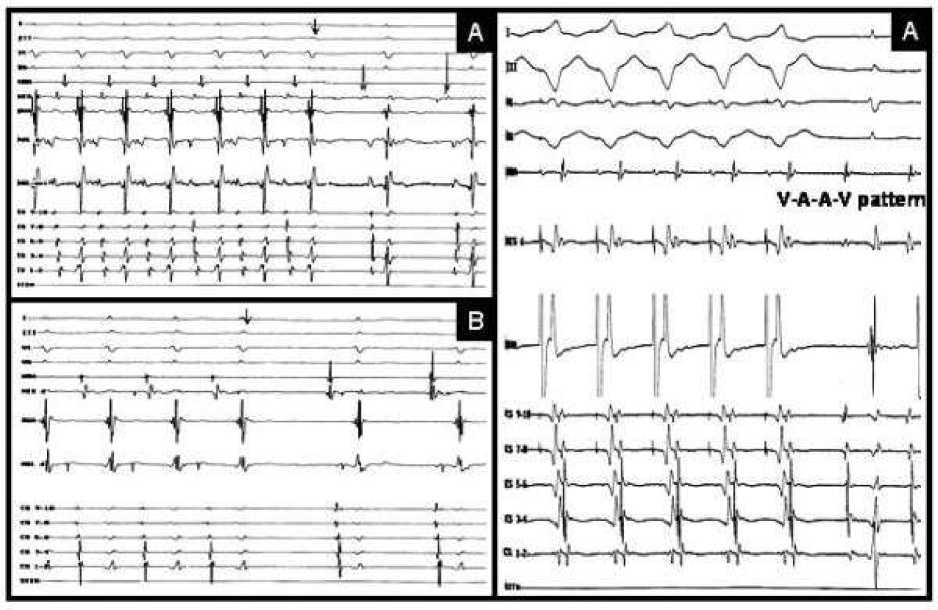Majid Haghjoo, Arash Arya, Mohammadreza Dehghani, Zahra Emkanjoo, 69
Amirfarjam Fazelifar, MohammadAli Sadr-Ameli., “Multiple Arrhythmogenic
Substrate for Tachycardia in a Patient with Frequent Palpitations”

Click here to enlarge
Figure 2. A, and B, termination of two forms of AVRTs using RPS-AP and RFW-
AP following RF energy applications, respectively. C, ''VAAV,' pattern confirming
atrial origin of tachycardia induced after SP ablation (for abbreviation, see the
figure 1).
In the study of 176 consecutive patients who underwent SP ablation for AVNRT,
Sticherling et al.4 demonstrated that 15% of patients with AVNRT, without prior clinically
documented AT, were found to have inducible AT. Inducible AT was non-sustained in 74% of
patients and induced only under isoproterenol infusion in the most of patients (74%). The
sustained episodes terminated spontaneously after 30 seconds in most of the patients. In this
study, less than 10% of patients with inducible AT had recurrent AT in follow up period
following SP ablation. This observation suggest that inducible AT, even when monomorphic
and reproducibly inducible, often may be a non-specific finding that doesn't have clinical
significance. Thus, therapy directed at the AT in patients who did not have documented prior AT
should be deferred and limited to the occasional patients who later develop symptomatic AT.
Because of easy and reproducible induction of AVNRT after successful ablation of
bypass tracts and absence of clinically documented tachycardia compatible with one of the
specific types of SVT, we decided to ablate SP in this patient. Because the majority of patients
with inducible AT without clinically sustained AT do not experience symptomatic atrial
tachycardia during follow-up4, ablation of AT was not attempted in this patient. The 8-month
follow-up of our patient confirmed this decision.
Conclusion
Our report demonstrated: 1) complexity of symptom origin in the patients with recurrent
palpitations, 2) the importance of detailed electrophysiological assessment in the patients with
Indian Pacing and Electrophysiology Journal (ISSN 0972-6292), 5(1): 66-70 (2005)
More intriguing information
1. Knowledge and Learning in Complex Urban Renewal Projects; Towards a Process Design2. Cultural Diversity and Human Rights: a propos of a minority educational reform
3. The Social Context as a Determinant of Teacher Motivational Strategies in Physical Education
4. The name is absent
5. References
6. The geography of collaborative knowledge production: entropy techniques and results for the European Union
7. Estimated Open Economy New Keynesian Phillips Curves for the G7
8. The Context of Sense and Sensibility
9. Sector Switching: An Unexplored Dimension of Firm Dynamics in Developing Countries
10. Response speeds of direct and securitized real estate to shocks in the fundamentals